Marcia Thornton Jones's Blog, page 27
October 9, 2023
Interview with Sylvia Whitman, Author of If you Meet the Devil, Don't Shake Hands
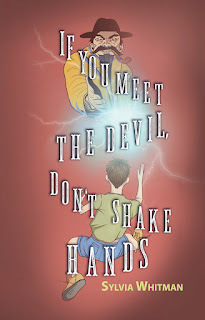
Welcome to Smack Dab in theMiddle! Please give us a brief description of If You Meet the Devil, Don’tShake Hands:
Twelve-year-old Gavin Baker, sonof a warrior, is a born worrier. With his father serving in the Army overseas,Gavin assumes that he’s already imagined the worst that can happen—until heshakes hands with his best friend Javi’s long-lost grandfather and findshimself trapped in the old magician’s ailing body.
Help! As the trickster takes overGavin’s life, fooling the girl of his dreams and even his own family, Gavinwonders if the imposter is a better version of Gavin than Gavin himself. He hasto convince Javi that the real Gavin now has hairy knuckles and a love of PabloNeruda’s poetry. Then the boys can try some tricks of their own. But will thetwo friends be able to reverse the old devil’s magic? Or will both of theirfamilies get their hearts broken?
As a child of the ‘80s, I had somuch fun with this–I grew up loving the switching-body movies (Vice Versa, Allof Me, Like Father, Like Son, etc.) Where did the idea of this body-switchingstory come from?
Body swapping’s not a new storyidea, but I think that’s because we’re all grappling with how to live withinour bodies. They’re both us and not us at the same time. Think about childrencalled “old souls” and seniors who are “young at heart.” The late cosmologistSteven Hawkins “embodied” this idea: He kept educating the world about theuniverse with intellectual rigor despite a body impaired by theneurodegenerative disease ALS.
Anxious Gavin goes to extremes totry to control his environment in my novel. But when he finds “himself” insidean ailing old man, he confronts an existential question (if we want to get allphilosophical): How much do we control our bodies, and how much do they controlus—and how other people see us?
I teach a class about writingpicture books, and when I do a brainstorming guided meditation with mystudents, I have them think about how their bodies changed in childhood—teethfalling out, scabs forming, arms breaking, hair coming in, etc. As I age, Inotice my body changing too. In a sense we’re body-switching all our lives.
You write in a variety ofmarkets, for a variety of ages–even academic work. Why MG?
MG readers combine the wonder ofthe picture book audience with more independent thinking. They’re willing tosuspend disbelief—but also to question characters’ choices.
And screens haven’t totallyhighjacked the attention of tweens. The ones I know read for real pleasure.
I instantly fell in love withGavin’s voice–I loved the facts he rattles off about insomnia, salmonella,etc., etc. I think MG-aged readers just delight in weird, random facts. Theypick up so much (and remember it). Do you find this to be true as well? Didinteractions with MG-aged children help shape Gavin?
Confession: I still love weird,random facts.
I have two kids, and althoughtheir middle-school years are barely visible in the rearview mirror, I dorecall their curiosity, delightful for being unjaded. The world was still newand awaiting discovery. I’ve attended many a kidslit conference, and I rememberhearing that boys really glom onto nonfiction. They devour encyclopedias coverto cover. That was somewhat true in my family. While my daughter leaned intohuman drama, my son pursued knowledge for knowledge’s sake.
Now that children’s books have takensuch innovative approaches to nonfiction and worked against genderingchildren’s interests, I’m hopeful that readers can find something that excitesthem in almost every book—a narrative arc in STEM or history books and weird(but researched!) facts in a novel with some magic in it.
Speaking of voice, I know you’reset to teach a workshop on voice and AI in the coming weeks. Can you speak tothis a bit here?
I’m looking forward to speakingat Florida WritersCon 2023, both in a regular session and at the NextGenWriters Experience, “a conference within the conference” for middle- andhigh-school students.
I’ve heard agents and editors atconferences say that voice sells a manuscript. A compelling voice keeps themturning pages even if they foresee that they need to work with an author ondeveloping characters or refining plot. Voice is almost synonymous withoriginality.
My college’s creative writingprogram is embracing AI as a tool, so we’re playing with various platforms inclasses to see where AI might enhance rather than usurp human creativity. Ifyou prompt ChatGPT with a story idea, for instance, it spews trite and genericnarratives. More informed prompting can give more useful results forbrainstorming, but I have yet to read something gripping. Voice seemsintimately connected with emotion and identity, which chatbots lack.
Just for the record, I’m notcreating AI-generated work, and the only assistance I’m considering at themoment involves research and revision feedback, along the lines of “summarizemy key points.” I enjoy the process of writing, so I don’t want to outsourcethat or let my “writing muscles” go flabby.
I love the scene where Gavintries to figure out what he wants most–how he goes through a list, and the firstthings that come to mind are some of the least important. He has to dig downthe list to find the things that matter the most. It seems like a twist on theold phrase be careful what you wish for, yes?
For me, motherhood was one of thefew experiences where the result surpassed the wish. I’ve felt that waytraveling sometimes: I don’t know what to expect, so I enjoy happy surprises.So often we think we want something, only to find it’s not all that weimagined.
I love that the book ends withanother wish scene–without offering too many spoilers, how is the last scenedifferent from the earlier wishing scene?
Wishing often implies giving upyour own agency. You beg outside forces to deliver gratification, even whenyou’re asking for the impossible. I’m proud of Gavin for discovering a balancebetween wild hope and realistic assessment. What can he really control?
What’s next?
I’ve got an interactive MGadventure coming out from Bushel & Peck Books in February 2024: Decideand Survive: The Destruction of Pompeii. I’m also working on a MG factybook about explorers of land and sea, a picture book about a famous squashplayer, and (slowly) a MG verse novel.

Where can we find you?
My website: www.sylviawhitmanbooks.com(There’s a contact page, and I love to hear from readers!)
Instagram: @writersylvia
FB author page: https://www.facebook.com/sylvia.whitman.author
LinkedIn: https://www.linkedin.com/in/sylvia-whitman/
October 8, 2023
INFINITE LOOP by Jane Kelley
Around and around we go. Rewriting, I mean. Just when you think you've fixed every little thing, you find another ghastly sentence. A trite turn of phrase. A gaping plot hole. Or maybe you hear a tiny voice whisper -- are you sure you couldn't make this better?
Enough already. Right? If it's not working by now, maybe you should just chuck the whole project. I hear there are good jobs to be had in telemarketing.
It's hard to keep going sometimes. Right?
Last month, I wrote about finding monarch caterpillars. I waited for them to emerge.
 The typical time for transition inside the chrysalis is 10 to 14 days. We watched and waited 15, 16, 17, 18. Experienced monarch raisers told us that they had never seen a butterfly emerge after that. Watched and waited. 19, 20, 21.
The typical time for transition inside the chrysalis is 10 to 14 days. We watched and waited 15, 16, 17, 18. Experienced monarch raisers told us that they had never seen a butterfly emerge after that. Watched and waited. 19, 20, 21.ENOUGH, I said. It's time to give them a decent burial. I can't stand to look at them anymore and think about what might have been.
But we didn't bury the chrysalises. It was raining that day. The day after that, guests arrived. The day after that, I looked.
The green was becoming transparent. On the 23 day, the wings of the butterfly were clearly visible.

And on the 24th day, the butterfly emerged.
 As you see in this photo, its wings are a little crumpled. This is normal. The monarch pumps fluid from its abdomen into the capillaries of the wings. The wings stretch and flutter for a few more hours.
As you see in this photo, its wings are a little crumpled. This is normal. The monarch pumps fluid from its abdomen into the capillaries of the wings. The wings stretch and flutter for a few more hours. Finally, on the 25th day, after being inside the chrysalis for twice as long as they were supposed to be, the two monarch butterflies flew. We hope all the way to Mexico.
Meanwhile, I am humbled and a little embarrassed by my lack of faith.
Don't give up!!!! Don't let other people tell you what the time table is. The project that looks black may just be in the final phases of breaking free from the chrysalis and starting to fly.
Jane Kelley is no long the observer of two monarchs and so may be able to get more writing done.
October 3, 2023
Some Words for the Discouraged Writer
We find ourselves in a strange time in the world of children's book publishing. It would be very easy to wallow or quit. But if you're reading this, I suspect you are a fighter—like me.
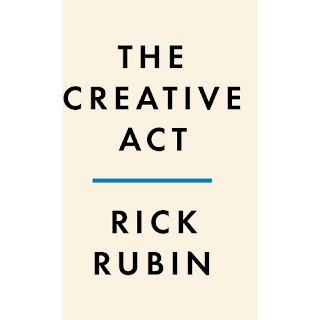
Maybe are thinking about ways to reinvent yourself, to find new avenues in publishing. Maybe it's time to carve a new path, try a new genre, strike out and away from the tried and true.
With that in mind, I offer you a few quotes from THE CREATIVE ACT: A Way of Being by Rick Rubin that offer inspiration for pushing through boundaries and imagined limits. Wishing you strength and courage as you forge ahead!
1. Be open and curious.
"The heart of open-mindedness is curiosity. Curiosity doesn't take sides or insist of a single way of doing things. It explores all perspectives. Always open to new ways, always seeking to arrive at original insights. Craving constant expansion, it looks upon the outer limits of the mind with wonder. It pushes to expose falsely set boundaries and break through to new frontiers." - Rick Rubin
2. Try something new.
"The decision to limit your work to the familiar is a disservice to both yourself and your audience. The energy of wonder and discovery can get lost when treading the same ground over and over again." - Rick Rubin
3. Don't overthink it. Just do. Play!
"It's best to wait until a work is complete to discover what it is saying. Holding your work hostage to meaning is a limitation." - Rick Rubin
---
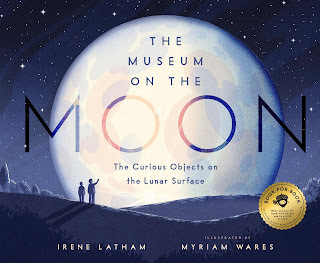 Irene Latham is a grateful creator of many books, including the co-authored African Town, winner of the Scott O'Dell Award; Can I Touch Your Hair? Poems of Race, Mistakes, and Friendship, which earned a Charlotte Huck Honor; and The Cat Man of Aleppo, which was awarded a Caldecott Honor. Her latest book The Museum on The Moon is part history, part science, part poetry, and showcases the trash and treasure humans have left on the lunar surface.
Irene Latham is a grateful creator of many books, including the co-authored African Town, winner of the Scott O'Dell Award; Can I Touch Your Hair? Poems of Race, Mistakes, and Friendship, which earned a Charlotte Huck Honor; and The Cat Man of Aleppo, which was awarded a Caldecott Honor. Her latest book The Museum on The Moon is part history, part science, part poetry, and showcases the trash and treasure humans have left on the lunar surface.
October 2, 2023
Some New MG Novels for October Reading
Some New MG Novels for October Reading
I’ve read so many great new middle grade novels over thepast month as I interviewed authors for my Book Q&As blog, and I thought I’dshare what a few of these authors had to say.
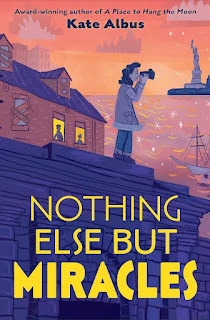
Kate Albus is the author of the MG historical novel NothingElse But Miracles, which is set in New York City during World War II. Albus told me, “I wrote Nothing Else But Miracles during the darkest part of thepandemic, when it felt like, rather than coming together to support oneanother, many people were acting without thought for the common good.” Sheadded, “I think a part of me really yearned for that sense of shared community,and of everyone looking out for and genuinely caring for their neighbors. So Ihope kids will be reminded of the value of everyday kindness and generosity.”

Thushanthi Ponweera’s new middle grade novel in verse iscalled I Am Kavi, and it focuses on a girl in Sri Lanka. Asked what she hopedreaders would take away from the story, Ponweera said, “The fact that there arechildren around the world, experiencing life in completely different ways, butalso facing the same problems. That we shouldn’t be afraid to question beliefstructures that we may have grown up with. That it is possible to be loved forwho you are, even if it’s hard. That they now know where Sri Lanka is!”

In her MG novel Together for Never, Marilyn Kaye writesabout two girls whose parents are in a new relationship with each other. Kaye said, “I’ve witnessed many ‘blended families,’ with all their ups and downs. Inmost of them, the children of the couple were supportive, but I was wonderinghow hard it would be for the kids who didn’t think a relationship was a greatidea — not because they didn’t like the parent’s prospective partner, butbecause of how it would change their own lives in other ways. I wanted the twogirls to be very different from each other.”
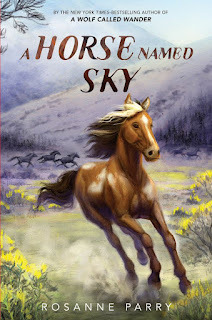
The protagonist in Rosanne Parry’s new MG novel, A HorseNamed Sky, is indeed a horse. Parry told me, “I love the research process. Foreach book I write, I read 20-30 books and find all sorts of experts tointerview. I also spend time in the field, both watching the animal I’m writingabout and closely observing the environment where they live.” She added, “It'snot enough to say horses eat grass. I need to know which grasses they eat andwhich they shun. Do all wildflowers taste the same? I tasted them to find out.Some flowers are sweet and some sour and some bitter.”
It's always fun to find some wonderful new MG novels, and Ihope you take a look!
--Deborah Kalb
@font-face {font-family:"Cambria Math"; panose-1:2 4 5 3 5 4 6 3 2 4; mso-font-charset:0; mso-generic-font-family:roman; mso-font-pitch:variable; mso-font-signature:-536870145 1107305727 0 0 415 0;}@font-face {font-family:Calibri; panose-1:2 15 5 2 2 2 4 3 2 4; mso-font-charset:0; mso-generic-font-family:swiss; mso-font-pitch:variable; mso-font-signature:-536859905 -1073732485 9 0 511 0;}p.MsoNormal, li.MsoNormal, div.MsoNormal {mso-style-unhide:no; mso-style-qformat:yes; mso-style-parent:""; margin:0in; mso-pagination:widow-orphan; font-size:16.0pt; font-family:"Times New Roman",serif; mso-fareast-font-family:Calibri; mso-fareast-theme-font:minor-latin; mso-font-kerning:1.0pt; mso-ligatures:standardcontextual;}.MsoChpDefault {mso-style-type:export-only; mso-default-props:yes; font-size:16.0pt; mso-ansi-font-size:16.0pt; mso-bidi-font-size:16.0pt; mso-fareast-font-family:Calibri; mso-fareast-theme-font:minor-latin;}div.WordSection1 {page:WordSection1;}
September 28, 2023
I Got a New Attitude
Your use of language is incorrect, I know better.
You need to read these books (X, Y, & Z) for proper context.
Why do you think you have the right to write this story?
 Photo by Andrea Piacquadio: https://www.pexels.com/photo/yelling-...
Photo by Andrea Piacquadio: https://www.pexels.com/photo/yelling-...
Pushback. Negative attitude.
Writers and authors all get this. Sometimes it comes from well-meaning colleagues, industry professionals, or even family. Sometimes it comes in the guise of 'friendly advice'.
That doesn't make it correct or wanted.
The above three criticisms came from an editor's critique I paid for at a conference. Criticism is hard, but a good author will learn to set the emotional aspects of the criticisms aside and examine them for feasibility. We learn that not all criticism is valid because everyone has their own prejudices, backgrounds, and beliefs. In the above case, I took a month to reflect and review (after the initial shock of the hostility), I came to the conclusion that the editor was wrong on all of them. One, the foreign language I incorporated into the book was correct because I'd had it checked by someone who was an expert; they translated both English and German, had studied and lived in Germany, and the editor was not a native German speaker. Second, the books the editor wanted me to read had nothing to do with my novel other than being in the same time period (World War II). Not every story in that time period set in Germany is about the Holocaust. And third, I have German and Swedish ancestry. I still have family in Germany and Sweden. I think that shows that I am not appropriating a different culture (although freedom of speech and fiction gave me the right in the first place). Everything in the editor's critique was pushback and negative. Why, I have no clue. The editor seemed almost angry I would write a story about a German zoo.
That critique stays with me still and is an important reminder that you can't please everyone all the time. Yes, if I want to get published traditionally I will have to please an editor, but first I have to please myself. I have to be happy with the story (not that there isn't room for improvement; the best books can always be tweaked also).
I put the story aside to work on others, but I will not kill it. I will look at it again someday, and even if I independently publish, the story will live. No one can push me away from a story I truly believe in unless I let them. I've looked at other stories after a year or so away and with a fresh critique, I can see how the story wouldn't work in its current form. There is always something positive about any story, even if it's hard to see at first. When we authors get that pushback and negative attitude, we owe it to ourselves and our story to step away and come back when we can look at it without attitude or emotion and determine if the pushback and negative attitude was appropriate.
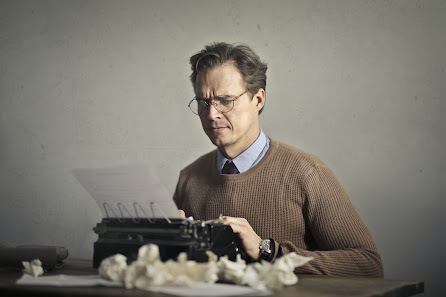 Photo by Andrea Piacquadio: https://www.pexels.com/photo/adult-fr...
Photo by Andrea Piacquadio: https://www.pexels.com/photo/adult-fr...Charlotte writes MG, YA, NA, and adult novels in sci fi, fantasy, contemporary, and paranormal genres. She is the author of the award-winning middle grade Evolution Revolution trilogy, Simple Machines, Simple Plans, and Simple Lessons. She co-authored the YA novels Blonde OPS, Sirenz, and Sirenz Back in Fashion. She has two short stories in the Beware the Little White Rabbit (Alice through the Wormhole) and Scare Me to Sleep (Faces in the Wood) anthologies. Having finished her MFA, she's applying what she learned and is working on several children's and adult novels, along with some short stories. She lives in NJ with her family and her floofy cat. When they trimmed the backyard tree, the crazy squirrel couple had to move out.
September 27, 2023
Guest Post by W.B. Murph, Author of Molly's Miracle

In George Orwell’s “1984” the future is uniform. Everyone’slives are controlled by “Big Brother”. Everyone dresses, works, behaves, andlives as the party dictates. The protagonist, Winston Smith, decides that hewill keep a diary of his thoughts (a “thoughtcrime” in this state) as thetiniest act of rebellion against a world of uniformity. This minisculerebellion leads to a full on war against the party. He does not win, but hisstory provides an extreme example of life without differences for us toconsider.
Too often, the human world is focused on conformity.Children must be well-behaved, women must act like ladies, and men must be goodproviders in order to conform to someone’s notion that this is how the worldshould be. It is the world those now incharge grew up in. The new generation of children is starting to change things.They recognize there is value in everyone. If the world does not break them ofthis wonderful ideology, the possibilities for the world are endless. Our worldbounds forward when it begins to value people over profit, love over hate, andkindness over power.
Dogs have a unique understanding of these children’sviewpoint. Each dog knows that he has value simply by virtue of BEING. They donot need to have four legs, two eyes, brown fur, or any other thing to share inall the fun and excitement a dog’s world offers.
Murphy tells everyone he meets that he is “living his bestlife”. That means Murphy accepts that he is often ornery, sometimesstandoffish, frequently flippant, but always adorable. Murphy accepts hislimitations. He is a Beagle, and he can never, ever be a St. Bernard; he doeshe want to be since being a Beagle is completely acceptable to all he meets. Muchmore important than accepting himself, though, is accepting others exactly asthey are.
The characters in Murphy’s books normalize the amazing varietyof circumstances encountered in the world. He feels this is of crucialimportance for teaching the very small humans that everyone is different andeveryone has value. So for him, amputating Molly’s leg was not a reflection ofsomething wrong or something bad, but simply one fact of a full and interestinglife. Amputating a painful leg is sometimes necessary to helping us live ourbest lives.

Murphy sees all the differences in the world as exciting;differences are a valuable educational tool for not only the one who is“different” but also for all the people they meet. There is no such thing as anordinary dog. There are many thousands of Beagles in the world, but there isjust ONE Murphy. The same is true of humans. Many children and their parentsmay read Murphy’s book but none of them will have exactly the same reaction toit. Some may find it upsetting that Molly has her leg amputated, but this isreally a loss for them because they are holding on to a uniquely human notionthat losing a leg is “bad”.
Every difference has a valuable lesson to teach humans aboutwhat it means to accept oneself as truly unique and special. An obviousdifference, like an amputated leg, allows Murphy to show this in a very overtway, but there are also a myriad of subtle differences that make up the worldas well, all of which coalesce into the beautiful, vibrant tapestry of life inwhich we live. Examining an overt difference with a new mindset may help thereader to appreciate the more subtle differences in life as well.
There is nothing beautiful, or special, in conformity. Toappreciate the brilliant blue of a cloudless sky we must have lived throughsome rain. Indeed, many experiences considered negative are an integral part ofexperiences the world deems positive. Rain grows trees, flowers, and grass. Itprovides life to the world. Every time a ball game is rained out, the worldreceives the infinite gift of LIFE.
There are differences the world has assigned “good” or“bad”, but these are human constructs. Each difference can be good, bad, orneutral – ultimately it depends on the individual. To help the world seedifferences as special, Murphy wants to start normalizing the “bad” differencesand highlight the ways in which they make society so much better. Just likethat rained out ball game, a child who is blind may teach others the true joyof listening with intention. A dog with an amputated leg may teach us that playcontinues on three legs just as it did on four. If an individual decides toaccept their difference as a gift, then it will be one.
Molly is typical of our world – she sees her disability as aliability. She is broken and has no worth, even to herself. Her story is theliteral path from broken and worthless to perfect. The interesting part ofMolly’s journey is the ONLY change that happens on her path is inside of her.She learns along her way that different can just be special if that is how shewants it; her differences are what make up her sparkle and shine.
She is special because she offers the world a chance tolearn to value her. She offers the world another perspective, a uniquecircumstance through which others can find what is different in them andhighlight it for the world to see. These discoveries become like an enormoussnowball rolling down a steep hill. Every person who chooses to treat his orher difference as a gift adds more snow. If enough snow is added, the world cannever stop it. One can offer no greater gift to humanity than the chance to learn,love, and grow. In learning, in growing, in loving is where we learn to live our best lives – Just like Murph.
~
Links of Interest:
September 25, 2023
Pushback from Myself (Holly Schindler)
 Nobody writes without enduring negativity.
Nobody writes without enduring negativity. Sometimes, a lot of negativity.
Rejection, negative reviews, etc., etc.
When I graduated and decided to give writing full-time attention, I even got negative response from some of those in my English department. Kind of a, Yeah, okay, you do that, Thoreau kind of response.
But the worst negativity? The kind that actually did feel like pushback? The kind that did the most to drag me backward, keep me from making progress?
It came from me.
Oh, sure, maybe I could say the cause of my own negativity, my doubt, my you're not as good as you think you are came from the outside rejection...
But the thing is, you don't have to let that stuff take root.
I've come to think the hardest part of any negative response--especially a review or critique--is that you have to let it in. You can't dismiss every single negative comment. If you did, you'd never grow. But you can't allow it to make you feel less worthy. You can't get in the spiral of thinking you just plain aren't good enough. You don't let negativity take root by simply getting to work. Distancing yourself enough to figure out what you really can see validity in, what you really can work with, and then getting your fingers to the keyboard.
That much, I could figure out pretty quickly. Honestly.
What I'm not good with?
Inactivity.
It drives me crazy. A long stretch with nothing happening--no contracts, no requests from editors or agents? That can really start to mess with my mind. That can feel like pushback, the absolute worst of all negative responses.
And then I can start to pile on--an overactive brain showing me over and over again the progress I'm not making. It begins to feel like utter failure.
The only way to push against that, I've found, is to make something happen on my own. Again--just get moving. Indie-publish a book. Start a newsletter. Find a way to get my words out there, where they can be seen.
That's how I stop the internal pushback.
~
Holly Schindler is the author of the MG The Junction of Sunshine and Lucky.
September 24, 2023
Interview with Rob Long and Andrew Dolberg, Authors of The Great Weather Diviner
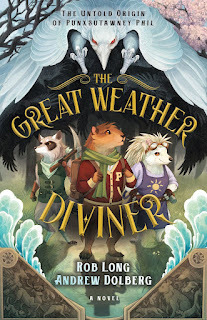
The Great Weather Diviner has such a fantastic premise. Please tell us more about it: RL: Thank you! As a Punxsutawney native, I was always captivated by the local Groundhog Day traditions and legends. It reminded me of so many other mythologies surrounding weather. The concept of weather prediction becoming unpredictable due to climate disruption just occurred to me as a way to reintroduce this story to a new generation. I always wanted to tell a story that reflected the sense of distress and betrayal that young people feel over the climate crisis, but on their terms.
Rob, I love your acknowledgement, describing your feelings about showing the initial draft to someone else (handing over a scarf knitted in your own hair). It really can be so hard to show your work to someone. Why was Andrew your first choice? RL: It really was daunting to share my writing. It really takes a lot of nerve to just decide you can write and assume that it's comprehensible, let alone enjoyable for someone else to read. I started the whole project as sort of a therapeutic creative outlet during Covid, not really knowing where it would go. It's such a unique concept that I knew only a very few people would get it. Andrew and I had spent many hours over the years debating movies, shows, books, and comics. I knew that he was creative and had a nuanced understanding of narrative structure, but most importantly I knew that he'd actually read what I sent him. I'm still so thankful that he saw the potential in this story or it never would've become a novel.
Andrew, what was your very first reaction to Rob’s pages? AD: I was blown away when Rob shared the original short story with me. It brought me back to memories from my elementary and middle school days when we would watch the whole Groundhog Day ceremony. That nostalgia was powerful, but I was also impressed that this was a truly new concept, not something that recycled the same storytelling troupes. I also loved the idea of using a fantasy epic to talk about climate change in a way that was accessible for children, and that became the basis for how we grew the story and developed the themes.
I’m always so intrigued by writing partnerships. Mostly, because writing is such a truly solitary endeavor, most of the time. What was your process like? The most important part of our writing process wasn't actually the writing, it was the countless hours of discussions we had before we ever put pen to paper. We got together multiple times a week and talked about the characters, setting, history, politics, and more about the fantasy continent of Erda because we wanted it to feel like a complete world. By the time we started writing, the story just flowed. We learned each other's strong suits pretty quickly and fell into a natural rhythm. One of us would write a chapter then the other would edit and we alternated roles depending on who felt they could nail that section of the story. Looking at it now, we developed a unique shared voice that's different from our independent writing styles.
The book also addresses climate change and extinctions / biodiversity. At what point did that enter into the story? That theme was clear from the very first iteration. We believe that the climate crisis is the story of our time. We both feel that this book wasn't worth writing if it didn't have an important message. On its face, this novel is a heartfelt coming of age story that reinvents a quaint piece of American folklore, but deep down it's meant to connect young people with critical environmental issues in a way that's not preaching to them, but instead relates to how they feel about it.
What were the biggest changes in the storyline from the first draft to the final version? Well if we're talking about the original short story, the changes are drastic. It was about a third of the length, and was missing most of the key plot points that we eventually developed and even one of the three main characters featured on the cover. One of the most important additions was the whole storyline that happens in Punxsutawney while Junior is on his big adventure. We don't want to give too much away, but the first iteration was just a shadow (pun intended) what we eventually drafted. From the first draft of the full book to the final version, there are actually very few major changes. Before writing the third act, we did a retreat where we cleaned up the plot a bit and developed a detailed outline for how the story would conclude. That's probably the point at which we made the most changes to the first draft of the chapters, and we added some mystery elements throughout the story and planted seeds for some big reveals. Once the third act was written, we didn't make any further changes to the plot. We added details here and there, but we had a very clean draft that just needed some line edits.
The Great Weather Diviner contains some incredible worldbuilding. What was that process like? In so many ways, you had a complete blank slate, and the world you created was your own. Did you find that freeing? Or was the blank slate daunting? The worldbuilding was one of the most fun aspects to developing this story. We've always been fans of major fantasy epics like the Lord of the Rings, Chronicles of Narnia, Eragon, Game of Thrones, etc. and we were excited to start from scratch in designing a place that felt similar to those worlds. We realized early that we had to decide how much of our world paralleled the real world. The obvious deviation from reality is there are no humans, only anthropomorphized animals, but Punxsutawney is a real town. We had to figure out what other places and landmarks would at least share the name of real things - even if they were fictionalized versions. The real challenge was figuring out how much of this world we could reveal to the reader without overwhelming them or taking away from the plot. We found ourselves paring back a lot of background information to let the characters breathe. We know so much more about Erda than the readers because of our discussions to fully develop the world before writing. The good thing is, even the concepts that got cut still exist in our world and can appear in later books in the series. There's a lot more of Erda to cover!
What was the editorial process like? Did the two of you ever disagree about a plot point or an editorial choice? How did you navigate it? Honestly, we didn't have big disagreements on anything major. There were of course some ideas that one of us loved and the other didn't, but we realized that this was a collaboration and we were pretty good at compromising. We also got very good at explaining *why* something was so important to us. So if one of us felt strongly about a scene progressing in a certain way, we would talk about how that would develop some other plot point later in the story. We have been friends long enough that our rapport allows us to address issues very effectively, but frankly we're on the same page 90% of the time.
What’s next? We have a spinoff children's picture book meant for the Easy Reader (4-8) age range called Hugo: The Last Flamingo that's currently being illustrated by our wonderful cover artist, Madison Brake. We're really excited about it, as it will be more Florida-centric (where we both live) and cover a lot about the Everglades. We're hoping to get that published next year. Besides that, we're busy outlining the sequel to The Great Weather Diviner.
Where can we find you? You can preorder The Great Weather Diviner at Barnes & Noble, Amazon, and a growing list of independent bookstores. You can connect with us on Facebook and Instagram @GroundhogBook and Andrew has a new TikTok @AndrewDolberg. You can also visit our website at www.GreatWeatherDiviner.com for more details about the book, announcements, and some absolutely beautiful merch.
September 23, 2023
Imagination Totems: Smack Dab in the Imagination by Dia Calhoun
Today, my imagination failed me. Wait. That’s wrong. Today I failed my imagination.
The First Way I Failed My Imagination
Because the main freeway was blocked, I forgot that imagination has sideroads, backroads, and byways. WAZE doesn’t know them. They aren’t on our maps. Imagination has its own maps. They are three-dimensional, which I can sort of grasp, and probably five-dimensional which I never will, short of epiphanic experience. Here's to hoping.
Ok, so all this was progress. I saw the exits to the other roads, but this brings me to:
The Second Way I Failed My Imagination
How was I supposed to get my car around all the other cars blocking my way to the newly beckoning exits to the sideroads? Impossible. I sat and stewed. I forgot that imagination, as the world’s best shapeshifter, has other forms.
So I asked this question: What kind of imagination do I need to get out of this creative traffic jam on the project in front of me? An imagination that’s froglike, crouching on a hot rock and waiting for the world to bring the right moment? A cat-like imagination that stalks the slight movement in the bunchgrass and then pounces. Or do I need an imagination like a four-winged damselfly who sails the wind?
The metaphors could be many things. Today I settled on rain. Rain cleans away detritus, cuts channels, and drips into dry ground. I pictured rain falling on the jammed page of my book. What would the rain wash away? What would remain? What would glitter like the jeweled drops on the red maple leaves outside my window? It worked.
What is your imagination totem for the day, the project, or your creative life?
September 15, 2023
Glimmers and Starbursts and Hopeful Endings

You may remember my big summer news: After a particularly nasty fall, I underwentsurgery to replace a very sad hip. I couldn’ttake my walks. I couldn’t go into the woods or see my favorite trees or feed myfavorite turtles. The news was overwhelmingly depressing. I’ve watchedevery season of Doc Martin and The Witcher. And you know Whoooo!
And just about that time, a meme made its way to my page,defining the nature of glimmers. A glimmer is that micro-moment of happiness; asign of hope.
So, I decided enough is enough. I pulled out an old storyand made it new again. Working at the desk, while doing my leg exercises,o! the possibilities!
A month later, I could bike ½ mile (albeit, it’s a PT bike.But a bike is a bike!)
I walked 45 minutes (albeit, I stopped to practice mybalance, with my trusty cane – Miss Purple Bess – by my side.)
O, big glimmer. My eighth book, this one from Charlesbridge,is scheduled for Spring 2026!
So how does this relate to our topic on endings? Ending issuch a particularly good concept for me these days. I went to my Doc appt recently.I'm at the halfway mark. Only 6 more weeks of PT. Endings. And newbeginnings!
In other words, hope is the core ingredient for a satisfyingending to a story. There are many ways to end a story. There’s the happily everafter, common in romance stories and other fairy tales. There’s the “therestoration of honor through sacrifice; the bolstering of friendship andaltruism through earned humility.” As Vaughn Roycroft noted in his article,Good Story Endings: Happy or Sad, or Something Else?”
There’s the tragic ending, epitomized by Jack’s death inTitanic. And the open ending, when nothing is really resolved, andthe murderer seems to have escaped. Then there's the redemption at the end ofthe story. In each scenario, hope allows the character to move forward, and the possibilities are endless. After Jack died, Rose’s ‘heart lived on'to love again and have a family. Darth Vader found redemption and therebellion found new hope.
Hope means thestory didn’t end with the tragedy, or even with the ecstasy. It is, in essence,the beginning to the next chapter – the sequel, if you will.
David Means, author of Two Nurses, Smoking, said, “A goodending doesn’t answer a question. It opens up the deeper mystery of the storyitself.”
In other words, through dark moments and tragic scenes, andhappy reunions, the most memorable ending invites readers to glean meaning fromthe story and, in so doing, becomes inspired, as noted by Hannah Gullickson in herarticle, “Imagination and Writing: The “Hopeful Ending” vs. the“Happy Ending”.
And to end this reflection with a starburst: this morning Isubmitted the revision to my agent.

“Life is amazing. And then it's awful. And then it's amazingagain. And in between the amazing and awful it's ordinary and mundane androutine. Breathe in the amazing, hold on through the awful, and relax andexhale during the ordinary. That's just living heartbreaking, soul-healing,amazing, awful, ordinary life. And it's breathtakingly beautiful.” -- L.R.Knost
-- Bobbi Miller



